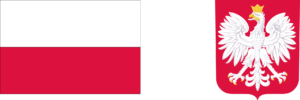The armistice of November 11, 1918, marked not only the end of the First World War but also the collapse of the old European order. The empires that had dominated Central and Eastern Europe for centuries—Austro-Hungarian, Russian, and German—crumbled under the pressure of war, revolution, and national self-determination. From their ruins emerged a new political landscape, one defined by the birth of nation-states and the rise of modern national consciousness. The year 1918 was therefore not only the end of a devastating conflict but the beginning of a new political era in Central Europe.
The Austro-Hungarian Empire, a vast and multiethnic conglomerate, disintegrated almost overnight. Its collapse gave rise to independent states such as Czechoslovakia, Hungary, and a newly reconstituted Poland. The peoples who had long been subject to imperial rule seized the opportunity to assert their sovereignty, inspired by President Woodrow Wilson’s principle of national self-determination. Vienna, once the heart of imperial power, became the capital of a small republic surrounded by the very nations that had once formed its periphery.
In the east, the Russian Empire had already fallen into chaos following the Bolshevik Revolution of 1917. The withdrawal of Russia from the war and the ensuing civil conflict allowed the emergence of new nations along its former western borders. Finland, Estonia, Latvia, and Lithuania all declared independence, while Ukraine briefly attempted to do the same before being drawn back into the Soviet orbit. The centuries-old dominance of the Russian tsars over these lands was replaced by a fragile but unprecedented attempt at national self-governance.
Germany, though defeated but not destroyed, also experienced a radical transformation. The abdication of Kaiser Wilhelm II and the birth of the Weimar Republic marked a shift from imperial autocracy to parliamentary democracy. However, Germany’s internal instability and resentment toward the Treaty of Versailles would soon cast a long shadow over the new political order.
For the peoples of Central Europe, 1918 represented liberation but also uncertainty. The new states had to build political systems from scratch, define borders, and reconcile ethnic and religious diversity within their territories. The optimism of national rebirth often clashed with the harsh realities of economic hardship, minority tensions, and competing territorial claims. Yet, despite their fragility, these new countries embodied a fundamental transformation of European politics: the replacement of empires with nation-states based on popular sovereignty.
The end of the First World War was, therefore, more than a military or diplomatic event. It was a moment of profound political rebirth. The old Europe of emperors and dynasties gave way to a continent of nations striving for independence, identity, and democracy. The struggles that followed would be long and complex, but the spirit of 1918—the belief that peoples have the right to shape their own destinies—became the defining legacy of the postwar era.






